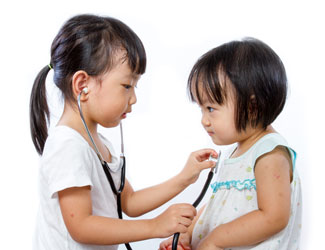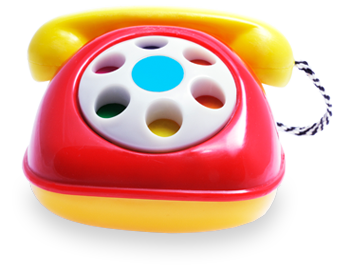A Comprehensive Approach
Duke has a team of specialists who contribute to your child’s evaluation and care plan. Our team members -- including specialists in neurology, cardiology, child behavioral health, medical genetics, neurodevelopment, neuropsychology, occupational therapy, physical therapy, psychiatry, sleep medicine, and speech therapy -- have extensive experience and specialize in caring for children with AHC.
Experience with AHC and Related Rare Conditions
Duke is uniquely positioned to diagnose and manage atypical alternating hemiplegia of childhood -- AHC that doesn't meet specific criteria or isn't caused by the classic ATP1A3 gene mutation. We also treat other rare conditions caused by different mutations in the same gene, including febrile-induced paroxysmal weakness and encephalopathy (FIPWE), epileptic encephalopathy, relapsing encephalopathy with cerebellar ataxia (RECA), and CAPOS syndrome, as well as other conditions associated with ATP1A3.
Influential Research
Duke doctors and researchers discovered the ATP1A3 gene mutation that is now known to be a leading cause of AHC. This 2012 breakthrough paved the way for additional research that may lead to effective new treatments and possibly a cure.
Access to Clinical Trials
Your child may be eligible to participate in ongoing clinical trials as a patient at Duke. We are the lead center for the International AHC Research Consortium’s OBSERV-AHC study. This long-term effort will monitor the natural history of AHC to better understand the factors that determine health outcomes. Our involvement in research helps us test promising new treatments, such as gene replacement therapy, before they’re approved for study or use in humans.
We Work with Your Doctor
Families travel to Duke from across the country and around the world for alternating hemiplegia of childhood care. We work closely with your local doctor, so your child receives the most comprehensive care possible, no matter where you live.
Lifelong Care
Access to care at Duke doesn’t end when your child reaches adulthood. We continue to see people of all ages who are affected by AHC.
Support Services
We understand families may be traveling to Duke from far away, and alternating hemiplegia of childhood evaluations can take several days. We can help you arrange local lodging and coordinate transportation to and from appointments. And through our partnership with Cure AHC, you can meet other parents and children affected by AHC while receiving care at Duke.


